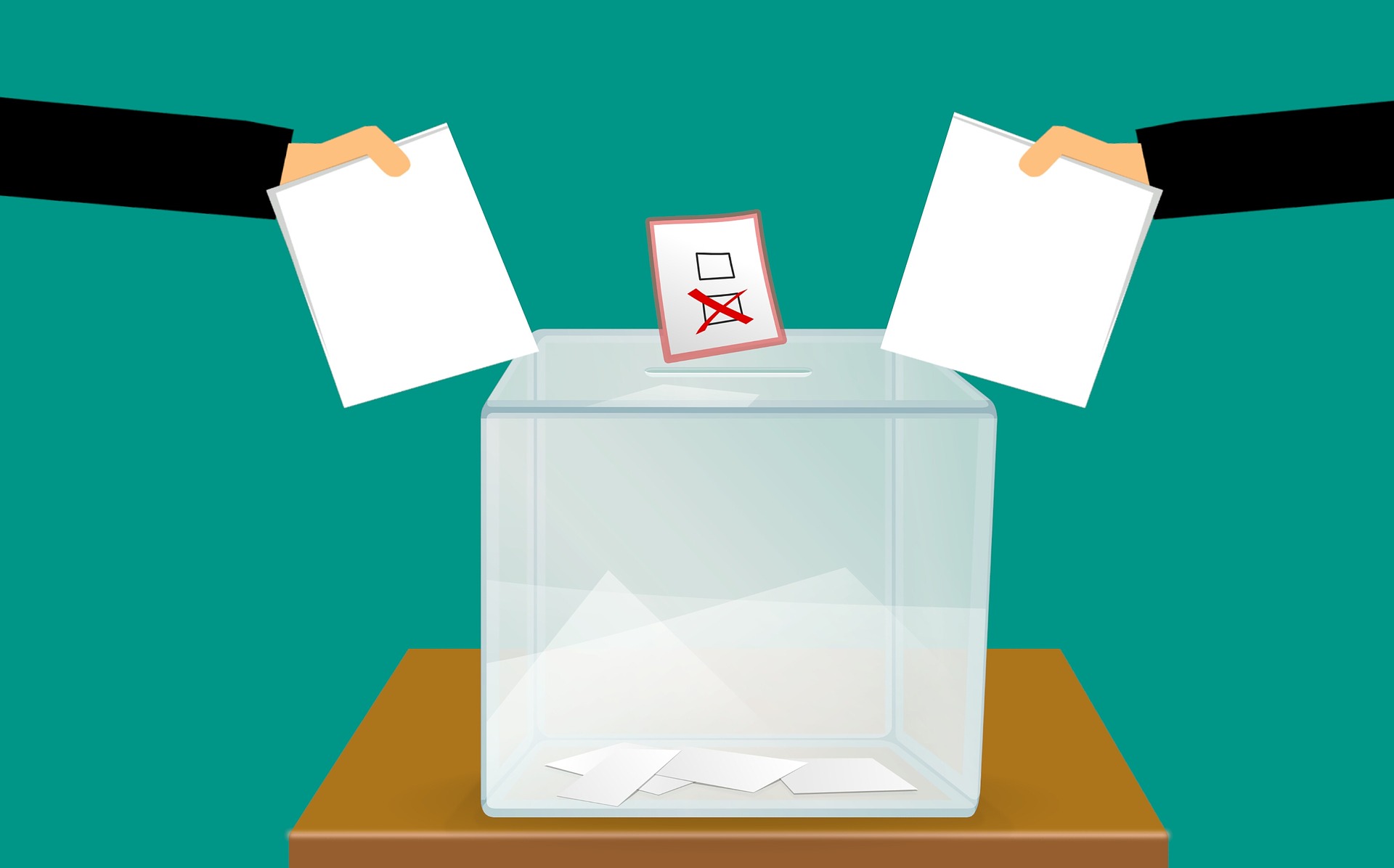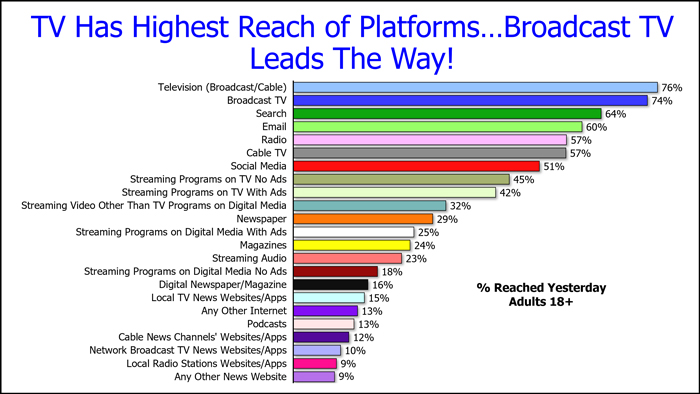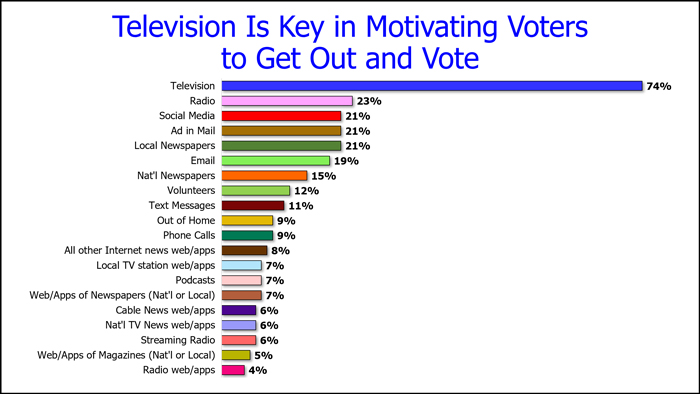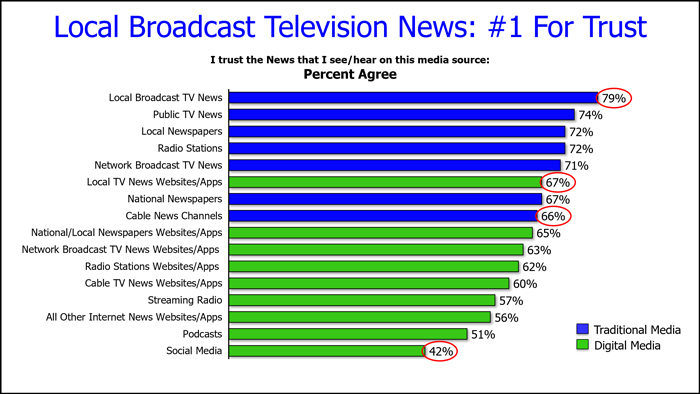TVB Survey Finds that TV Most Effective Way to Get Out the Vote
Local news was found to be the most trust media platform, with social media and cable news being the top purveyors of “fake news” according to the TVB

NEW YORK—In the run-up to the midterm elections, a new TVB study on media usage by voters in battleground states found that TV has the largest reach (76%), with broadcast leading the way at 74%.
TV’s status as having the largest reach was true for all breakouts, including by individual state, party affiliation and demographics (A18-34, A35+, men, women, African Americans and Hispanics), the TVB reported.

The study also found that at 74%, TV is key for motivating viewers to get out and vote, with radio coming in a very distant second (23%) followed by social media, an ad in the mail and local newspapers, all with 21%.

The purpose of the TVB’s 2022 political media usage studies was to gain an understanding of media usage across traditional and digital platforms within states expected to be politically competitive in 2022.
TVB commissioned Dynata to conduct the study. The base sample included over 13,000 registered voters ages 18+ in eight states: Arizona (1,000), Florida (2,000), Georgia (2,000), Michigan (2,000), Nevada (1,000), North Carolina (2,000), Pennsylvania (2,000) and Wisconsin (1,000).
To qualify, each respondent had to be a registered voter and had been exposed to any of over 20 media platforms (traditional or digital) in the prior 24-hour period. An equal number of respondents reported each day to ensure equal weighting, and demographic profiles were captured each day (age, sex, ethnicity and political identification).
The study also found that the primary source of news is broadcast television, but the #2 and #3 choices varied by demographic.
Get the TV Tech Newsletter
The professional video industry's #1 source for news, trends and product and tech information. Sign up below.
Local TV news (79%) is the most trusted among media platforms. Local TV news websites/apps (67%) are the most trusted among digital platforms. Social media, at 42%, is the least trusted.

Social media and cable news were the top picks for “fake news,” across all breakouts, including by individual state, party affiliation and demographics (A18-34, A35+, A50+, men, women, African Americans and Hispanics).
More information on the study can be found here.
TVB also released their 2022 American Conversation Study which offered a number of key insights into voters’ perceptions ahead of the midterms. Highlights included:
- 49% of respondents are talking about politics daily. That has grown +44% since 2015 (34%).
- 62% of respondents said they are very likely to vote in the upcoming November 2022 mid-term elections.
- About half of survey respondents said the economy was the #1 issue that would get them to vote in the mid-term elections.
- Media affects conversations; TV is the key to sparking and supporting American conversations about news of the day, local/regional news, and politics.
- Television affects 56% of political conversations, which is significantly more than online content, social media, print, and radio.
- Local broadcast TV news is the primary source of news. Respondents found it to be the most shareworthy, believable, and trustworthy news source.
- Respondents found social media to be the least believable and least trustworthy news source and also perceive “fake news” to be most prevalent on it.
More information on this TVB study can be found here.
George Winslow is the senior content producer for TV Tech. He has written about the television, media and technology industries for nearly 30 years for such publications as Broadcasting & Cable, Multichannel News and TV Tech. Over the years, he has edited a number of magazines, including Multichannel News International and World Screen, and moderated panels at such major industry events as NAB and MIP TV. He has published two books and dozens of encyclopedia articles on such subjects as the media, New York City history and economics.

